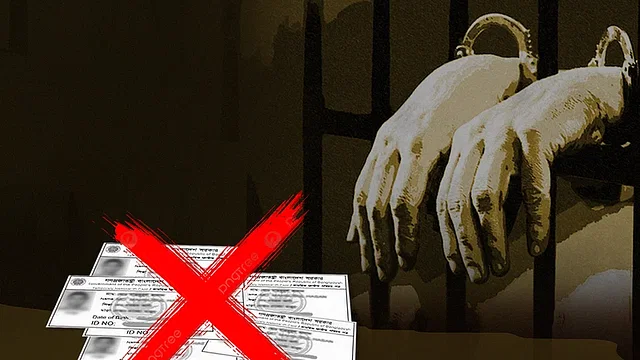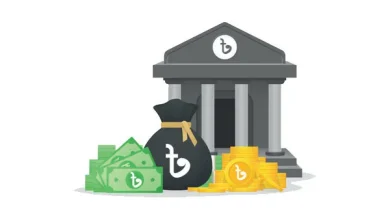Multiple NIDs of 290 inmates who serve in jail in exchange for ‘money’

A certain Jamir Ali was sent to jail when he surrendered to a Sunamganj court. The jail officials later realised that the person was not the actual accused when they were checking his thumbprint with the thumbprint of Jamir Ali preserved at the national identity (NID) card.
That person, Md Abu Sama, acknowledged about serving in jail impersonating the actual accused by taking money. Later, the court sentenced him to imprisonment for providing false information.
Speaking about this, Sunamganj district jail jailer Humayun Kabir told, “He (Abu Sama) could provide fake identity at the time of his arrest by the police or the person could be changed later. But this was detected at the jail easily as there is a process to verify fingerprints here.”
This was not a one-off incident. Every now and then there are reports of such people serving in jail impersonating others in exchange of money.
As of 11 November in 2023, the law enforcement identified 24 fake prisoners who were serving at different jails instead of actual accused. Besides, 290 inmates have been identified who served in jails multiple times using several NIDs. The Prison Inmate Database System (PIDS) has identified a person who entered jail five times using five separate NIDs.
PIDS has been installed by the National Telecommunication Monitoring System (NTMC) in all jails across the country for keeping biometric cross matching records of the prisoners.
Concerned people say over 150 types of information, including his personal data, types of crime, past activities, and visitor history, of an inmate are preserved on PIDS. Since its inception, the authorities have closed the previous system of jail databases.
NTMC director general Major General Ziaul Ahsan told identifying the actual accused and fake prisoners has become possible due to introducing a database like PIDS. It also helped identify prisoners with multiple NIDs. It has been possible to track the top criminals for preserving the information of 10 fingerprints, iris scan and photos of accused people.
Highest prisoner impersonation in Chattogram
The highest number of incidents of serving in jail by impersonators in exchange of money has been registered in Chattogram, with the number being 15. Mojibur Rahman from Savar in Dhaka was found to be impersonating Nasir Ahmed from Banskhali in Chattogram in exchange of Tk 3,000 in a case where a cheque bounced. Mojibur, however, did not have to serve for long as he was identified in fingerprint cross matching.
Mojibur Rahman, who is in bail, told, “I was not an accused in any case but surrendered before the court on my own on behalf of actual accused Nasir Ahmed in exchange of Tk 3,000. We got acquainted as he used to come to my tea stall.”
Likewise, Painu Pru Marma went to jail instead of Minu Marma, Rafiqul Ahmed Islamil instead of Shafiqul Hawalader, Shahidul Islam instead of Md Yusuf and so on.
Jail sources said all of them went to jail in exchange for Tk 10,000-50,000.
Dhaka Central Jail’s senior jail superintendent Suvas Kumar Ghose told, “We have got several such prisoners. When we release a prisoner upon receiving documents related to their bail, we take their biometrics. As some people’s fingerprints did not match, we realised they are not the actual accused. They were staying in the jail instead of others in exchange for money. We sent them back to court.”
A certain Shahjahan Shamin went to jail instead of Saidul Hossain from Cox’s Bazar. But a different name and address were found when his fingerprints were taken.
NTMC documents said Saidul and Shahjahan are relatives and Shahjahan went to jail in exchange for Tk 20,000.
Sources from Cox’s Bazar jail informed that Imam Hossain is a yaba trader. He was arrested along with yaba in his possession but Md Bacchu Mia entered jail impersonating him. The matter was revealed during cross matching fingerprints. Later, Imam Hossain was sent to jail.
Superintendent of Cox’s Bazar district jail, Shah Alam Khan told, “We have sent back the fake prisoners to jail upon learning two issues. Later, the court punished them too. There is no technical fault from the jail’s side here; rather, we could learn at the jail that they were working as proxies.”


